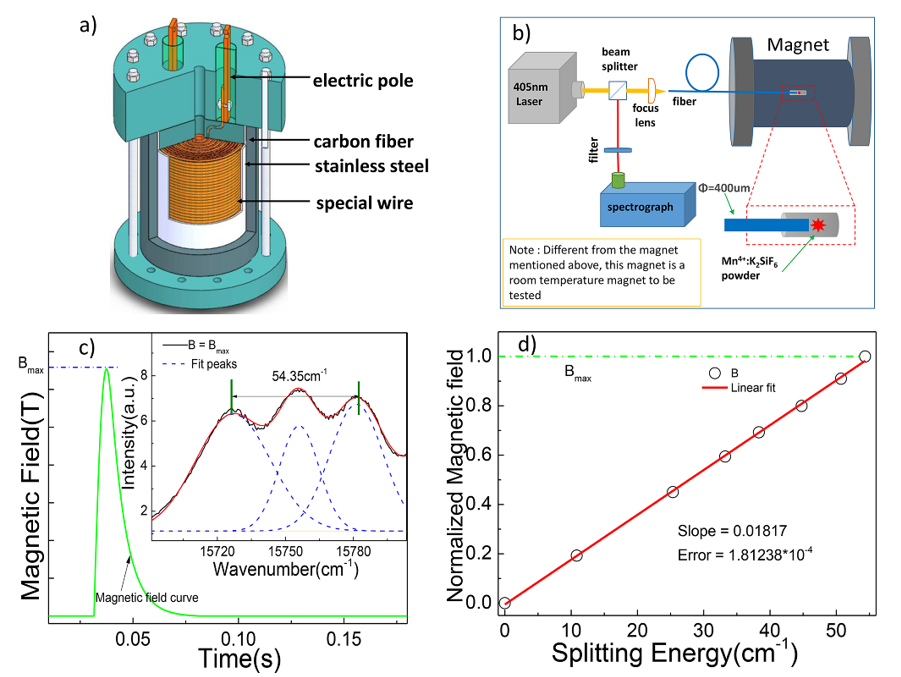
Optical detection of magnetic field with Mn4+:K2SiF6 phosphor from room to liquid helium temperatures.
(Appl. Phys. Lett.110, 212405(2017))
Background
High magnetic field is of great interest in recent years, since many great achievements have been obtained with the application of high magnetic field. A lot of techniques have been developed to generate ultrahigh pulsed magnetic field from tens of tesla to hundreds of tesla. But, how to precisely detect or calibrate the high magnetic fields under different setups are still very tricky and remain a challenge. Generally, people use as-known physical phenomena such as transport, magnetization and optical methods, to calibrate the pickup coils and then use the calibrated pickup coils to detect the unknown magnetic field. For transport and magnetization sensing methods, low temperature (below liquid nitrogen temperature) is the basic requirement. While for optical method, strong luminescent materials and expensive lasers are required. Therefore, it is urgent to develop a low cost, room temperature available and friendly operable method to meet the current increasing demands of high magnetic field sensing.
What we discover?
A new high magnetic field sensing method based on the Zeeman effect of Mn4+:K2SiF6 phosphor has been developed and tested. The temperature dependent PL measurement under pulsed high magnetic field demonstrates that the Lande factor (g) of the Zeeman splitting peaks from Mn4+:K2SiF6 remained close to 2 from room temperature to liquid helium temperature. These features make this Mn4+:K2SiF6 phosphor an idea optical material for remote sensing of high magnetic fields over a broad temperature range.
Why is this important?
Our work provides a low cost, room temperature available and friendly operable method to detect and calibrate the pulsed high magnetic field.
Why did they need WHMFC?
The experiment was designed for pulsed high magnetic field sensing and detecting, therefore magnetic field is the basic requirement.
Who did the research?
Zhiqiang Zhong1, Xia Wang2, Junpei Zhang1, Haizheng Zhong3, and Jun-Bo Han1
1Wuhan National High Magnetic Field Center and school of physics, Huazhong University of Science & Technology, 1037 Luoyu road, Wuhan 430074, People’s Republic of China.
2Wenhua College, Wuhan 430074, P. R. China.
3School of Materials Science & Engineering, Beijing Institute of Technology, Beijing 100081, China.
